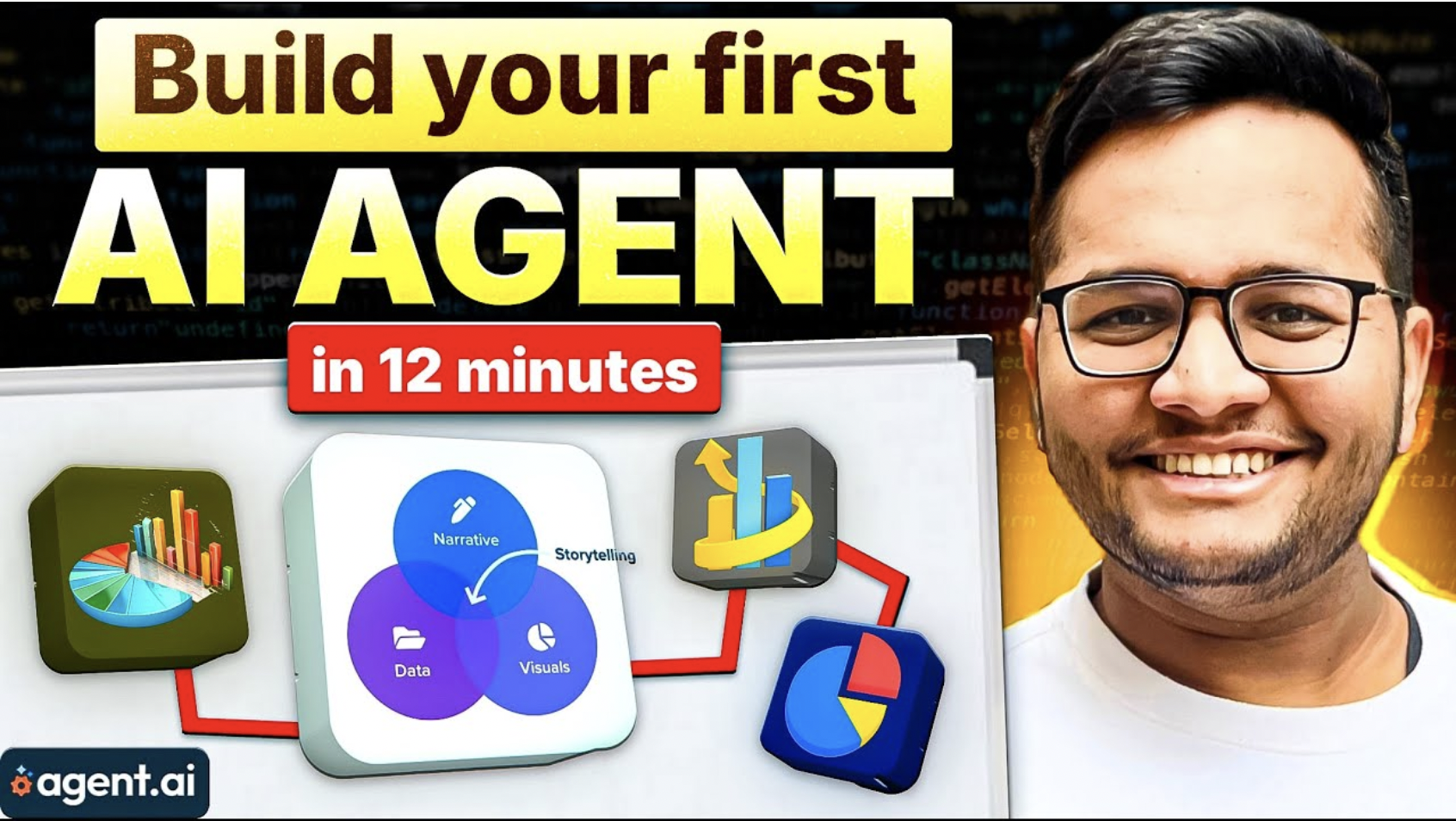First-Time Agent Builder Wins Back 10+ Hours a Week With His Data Storytelling Agent
Discover how first-time agent builder Arsh created an agent that saves him 10+ hours a week by turning raw data into clear, presentation-ready reports.


When most people think of AI, they imagine complex, futuristic systems. But for Arsh Goyal—a senior software engineer and content creator with over 1.4M followers across LinkedIn, YouTube, and Instagram—the real power of AI lies in something simpler: eliminating repetitive, time-consuming work.
With no prior experience building agents, Arsh created Datastory Telling Agent, a tool that transforms raw data into polished, narrative-driven reports. What used to take him 10-12 hours now takes just minutes, freeing him to focus on strategy instead of formatting.
This case study shows how he built his first agent in just two weeks—and how anyone can follow a similar path.
The Challenge: From Raw Data to Story
Before building his agent, Arsh’s reporting process was slow and tedious:
- Data prep: Cleaning spreadsheets, running pivot tables, and generating ad-hoc charts.
- Slide creation: Manually transferring visuals into presentations.
- Narrative writing: Drafting commentary to explain what the charts meant.
- Polish: Spending hours making everything stakeholder-ready.
The process wasn’t just time-consuming—it was inconsistent. Depending on his workload, some reports looked sharp and others rushed. “The manual process was a bottleneck,” Arsh recalls. “I wanted to spend less time on busywork and more time on strategic thinking.”
Why an agent?
Traditional BI tools like Tableau and Power BI helped with visualization but didn’t automate the storytelling process. Arsh wanted something that would not only crunch numbers but also explain them in a way stakeholders could act on.
When he discovered Agent.ai, it struck the right balance: powerful enough to handle multi-step workflows, but simple enough for a first-time builder.
The Build: Five Workflows, Two Weeks
Arsh identified the five workflows he used most often and turned them into automated steps:
- Data exploration – Get a quick overview of a dataset.
- Trend analysis – Spot patterns and changes over time.
- Comparisons – See differences between groups or segments.
- Relationship mapping – Detect correlations between variables.
- Executive summaries – Produce concise, high-level narratives.
From there, he broke down his data storytelling process into modules:
- Analysis: Crunch numbers automatically.
- Visualization: Generate professional charts.
- Narrative: Use AI to weave insights into a clear, written story.
- Output: Package everything into a polished report.
The initial version was working within a week. The second week was spent refining prompts, testing with real data, and improving output quality.
His biggest surprise? The agent surfaced insights he might have missed on his own. “It identified subtle relationships I would have overlooked with just a visual inspection,” he said.
You can see a complete YouTube tutorial from Arsh explaining the agent if you want a more in-depth tour of his build:
Results: Hours Saved, Quality Improved
Today, Arsh uses the Datastory Telling Agent as his “first-draft assistant.” He uploads a dataset, asks a high-level question, and within minutes gets back:
- Clean, professional charts
- A written narrative tailored for stakeholders
- A ready-to-present report
The agent saves him 10+ hours per week by eliminating chart creation, exploratory analysis, and first-draft writing. Stakeholders have noticed the difference, too: reports are faster, clearer, and more focused.
Lessons Learned
Looking back, Arsh says he might have started with a smaller use case before building a broad storytelling agent. His advice to others:
- Start with a pain point – Pick a repetitive task you do every week.
- Keep it simple – Don’t try to build a universal solution at first.
- Focus on value – Automate the boring stuff so you can focus on strategy.
What’s Next
Arsh plans to expand his agent with predictive modeling and anomaly detection, so it won’t just explain what happened—it’ll highlight what might happen next. But more importantly, the agent has already changed his role.
“I’ve gone from being a ‘preparer’ to a ‘strategist,’” Arsh says. “The agent handles the mechanics, and I get to focus on the big-picture decisions.”
Key Takeaway
Arsh’s story shows that you don’t need to be a deeply technical AI engineer to build something powerful. With the right tools and a clear problem to solve, anyone can create an agent that saves hours of repetitive work and elevates the quality of their output.
Get Started With Agents Now
Browse powerful AI agents or create your own—free, fast, and ready to use today.




